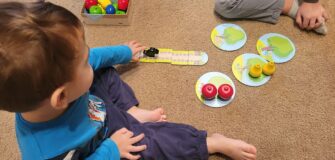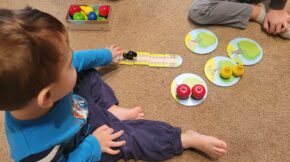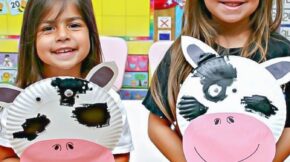15 Baby Development Activities for 3-4 Months Old
Share
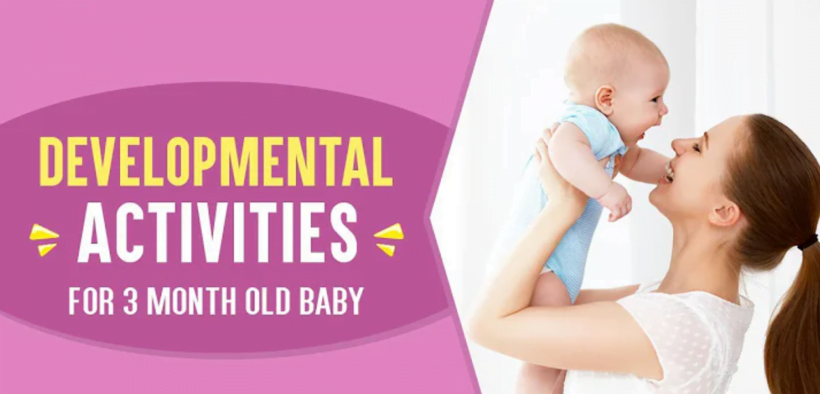
In today’s competitive world, first-time parents are always looking to give their children an edge over others, and they want to start early as well.
Babies as young as three to four months old are in their very early stages of sensory and motor skill development, and with suitable activities at home, your tiny titan can get the necessary stimulation to boost learning in these early days, and you, the baby-parent quality time that you so desire.
These developmental activities for 3-month-old balls of love are divided into further 5 categories, so make sure you read this article till the very end to not miss out on any.
Fine Motor Skills
These activities for 3-month-olds are designed to encourage your baby to hold or grab things with one or both hands. This will sharpen their response time and also teach them how effectively they can reach out and grab something they like. These activities are targeted at the fine muscle movements of the hands, fingers, and wrists.
1. Reach-Out
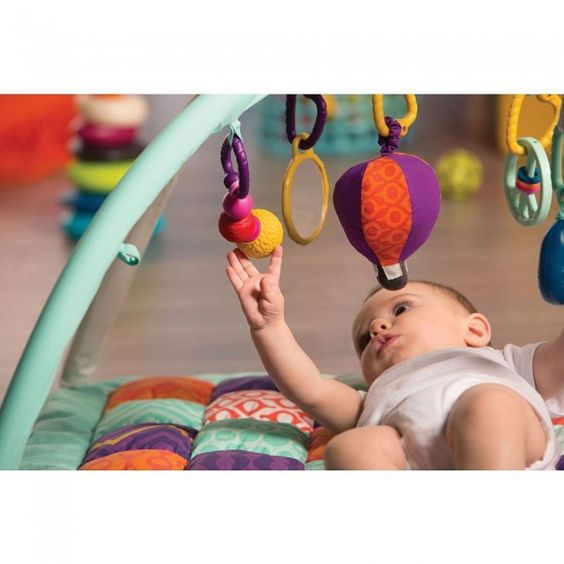
Lay the baby on her back and shake a rattle in front of their eyes, allowing them to reach out and grab it. Once the baby tries to hold it, slowly give it to them, making sure to let them make an effort for it.
If a rattle doesn’t please them, try using contrast cards. You can buy them online with the link attached or even print them at home on photographic paper to make them look shiny and appealing.
2. Treasure Hunt
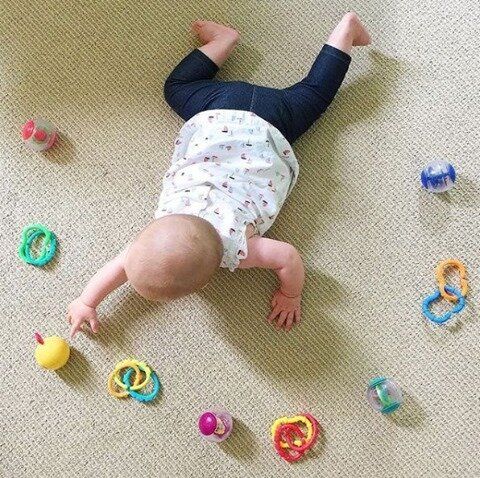
In 3 to 4-month-old babies, there’s a tendency to be on their bellies more than on their backs. That’s fine. It’s cause they just learned that the world looks different from this angle and want to explore.
Put the baby on their belly fill a basket with colorful rattles, silicon balls, and tethers, and place the basket in their reach. Allow the baby to grab a toy from the basket for themselves, do not put more than 3 to 4 items as this might overwhelm them with choices. Your tiny one will love this activity as it makes them feel in charge of choosing their toy.
Once they empty the basket, fill it again with different items.
3. Grab it
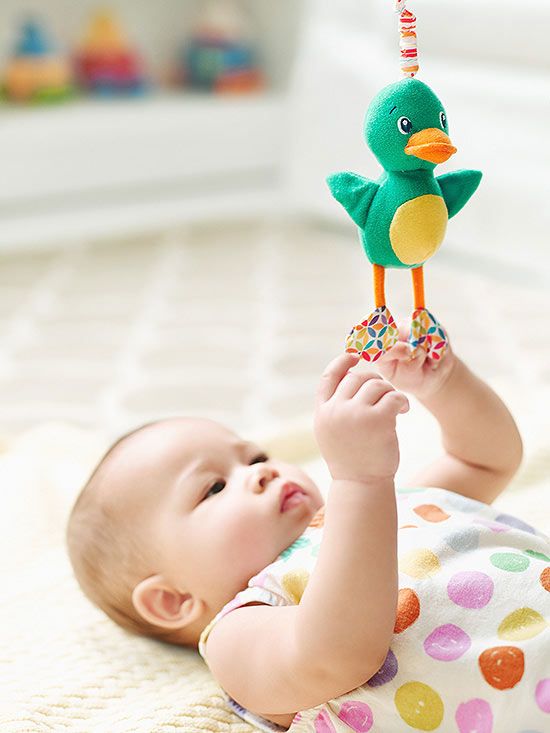
There are different toys available in the market that intrigue your babies and grab their attention real quick; one of these is rattles and teethers that have various textures and patterns on them all in one.
Let your baby grab and hold the toy to discover and feel the different textures; they’ll probably put it in their mouth, too, so make sure you clean these after playtime.
Sit back and watch how curiously they try to figure out what this alien object is you just gave them.
4. Sound and Action
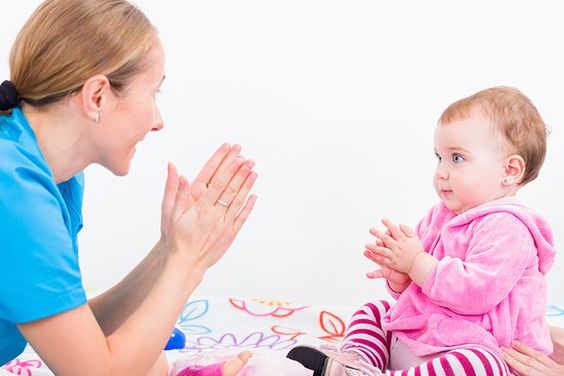
Lay the baby on her back and play action songs that encourage claps and particular hand and head movements. As the songs go along, clap your hands first to show them, and then hold your babies’ hands and clap them together gently in sync with the music.
Next, shake your head with the music, smile at your baby while doing so, and let them see and try to imitate you. After that, gently and softly shake their heads a little with the song to get them in sync with the song.
You can try various combinations of the above activities to try and create combinations. Make sure to give your little ones choices so you can understand which songs and sounds they love the most, coupled with claps and little head movements.
Gross Motor Skills
These skills are what include movements of the baby’s larger muscles, for example, the movements of arms, legs, upper body, and head. In the 3 to 4-month-old, there are a lot of tendencies to reach out, grab things, try to sit up, support their heads, kick things, etc. We have a list of curated activities that’ll encourage your toddler to stretch these muscles and teach them control of their heads, arms, and legs.
Following are some activities for 3 3-month-olds that’ll help in this direction.
5. A New World

Sit beside your baby cross-legged and gently place them in your lap, facing you in a sitting position while supporting their head and torso; very slowly remove and increase the gap between your hands to encourage the baby to support their head on their own. Make your little one look at you by making funny faces, talking to them, and making sounds.
Try to make them laugh. This way, they’ll subconsciously start trying to support their head to keep looking at you. Make sure their back and neck are well supported.
6. Tummy Time
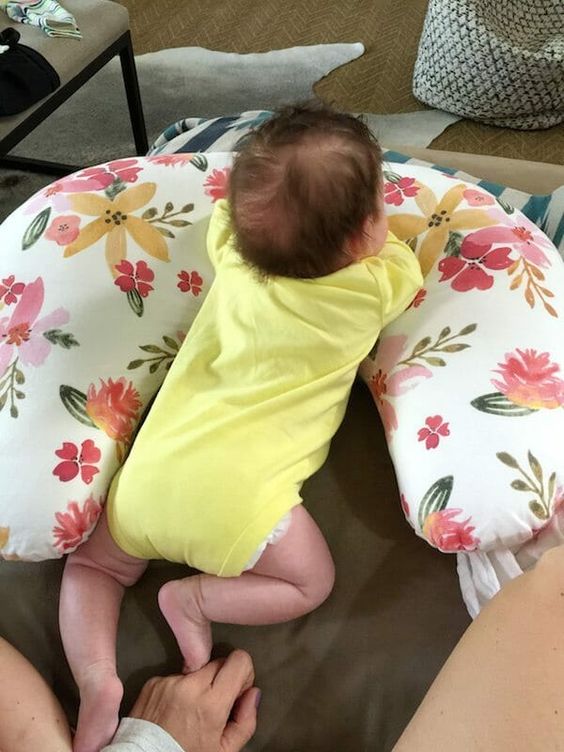
Place your baby on their tummy and keep a few of their favorite toys just out of their reach. Let them try and reach out to grab the toys. This will encourage them to use their hands, kick with their legs, and support their head to look for the toys. Keep a close watch; if the baby tries too hard, try placing the toys a little closer and even hand them to them if you feel they’re unable to reach them. This works best with a toy that emits sounds and is colorful.
Communication and Imitation Skills
These activities for 3-month-olds will help in the development of Communication and Imitation Activities of the kids. Your little one’s communication skills are important to develop them into the finest possible version of themselves over time; if they possess these skills, they’ll be able to perform both non-verbal and verbal forms of communication much more effectively, including eye contact, facial expressions, and body language.
7. Guess Who?
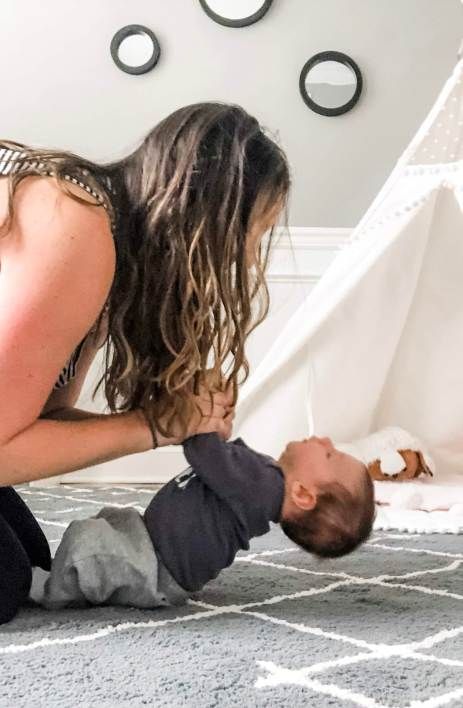
Enter the room where your baby is, call out to them, say their name, make pleasing sounds from a distance, and wait for your baby to look in your direction and search for the source of the sound. Try and see if they’re able to relate the sound with your presence. When the baby looks at you, pick them up, kiss them, and love them, thereby rewarding them for their efforts.
More fun activities like this are on the way, keep reading and know how to improve your baby’s attentiveness and reaction time.
8. Like Mom, Like Babies
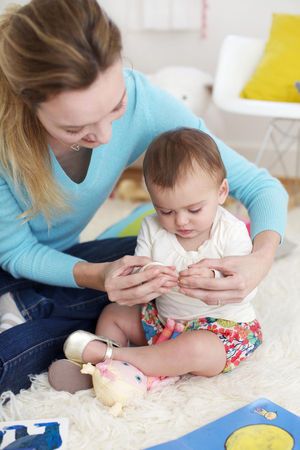
For this one, try and make your baby imitate you in making sounds, facial expressions, laughing, hand movements, etc. You can encourage the baby to do so by first imitating yourself as though you were observing yourself. Imitation games like these help a lot in sharpening the baby’s short-term memory and motor skills as well.
9. Storytime!
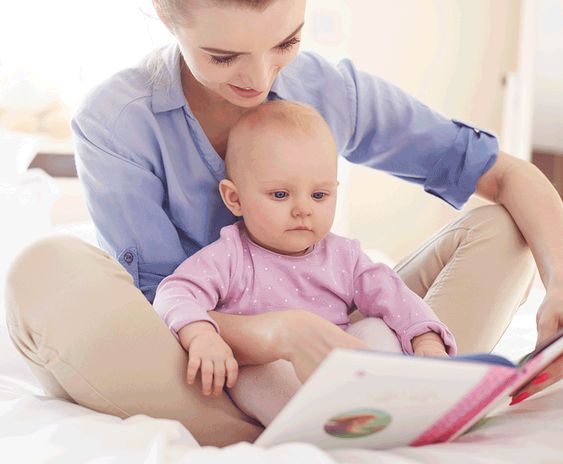
Yes, stories. Babies as young as 3 or 4 months old love the voice of their parents, especially in the presence of a colorful storybook. Put your baby in your lap facing a colorful storybook with large and cartoon figures, support their head with your elbow, if needed, and read the stories aloud, emphasizing every exclamation mark. Let them know you’re reading the book.
They’ll look at your eyes and the book. Let them reach out and grab the book, and gently ask for the book back. Let them look at the pictures in the book; they’ll love it and, over time, will develop a strong liking towards a certain book which grows to become their favorite.
Learning Skills
These activities help in enhancing the learning abilities of your baby and therefore play a very crucial role in the development and upbringing of your tiny one. Such activities for 3-month-olds are designed to focus on mental health and make their imagination soar high above the stars. Such activities sharpen the brain to become more focused and have a good retention state.
10. Reach Out
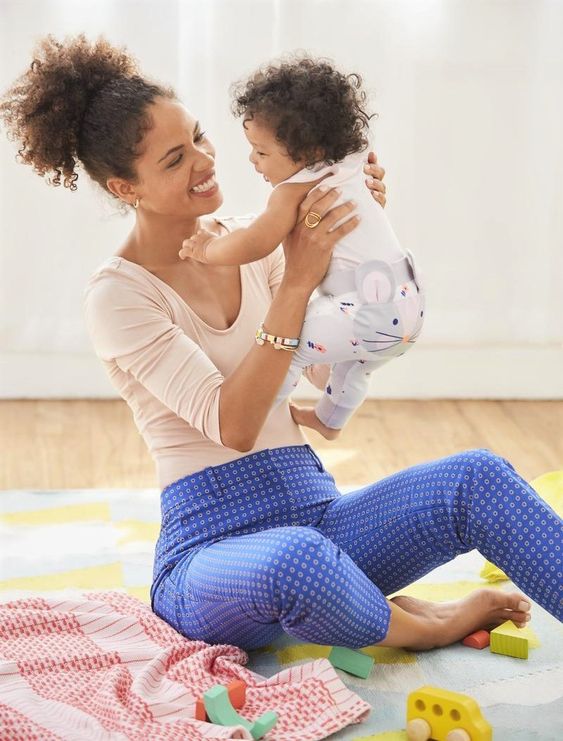
This activity says to encourage your baby to follow something they see as it moves, using toys. You can place your playful little one on their tummy and roll a ball to see if they follow its track with their eyes; after a time, reward the little one by letting them have the ball. The objects could be of various kinds ranging from a ball to things that they have no idea about.
By doing so, you can make good use of their curiosity and can teach them about things they should stay away from.
11. My Little Diary
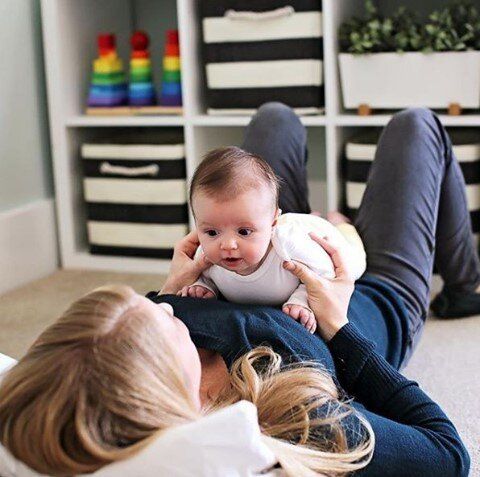
Your little ball of cuteness can be your daily diary whom you can tell all about your day. Yes, talk to them about everything, about your day, your plans, how you feel about them, tell them how much you love them, etc. And at the same time, modulate your voice with every emotion that you’re conveying.
Babies pay close attention to their parents while talking, the movement of lips, raising and lowering of voice, eye movement, etc. Over time, this activity will teach them the relation between emotions and sounds and, at the same time, maybe give them a partner to rant about how evil their boss is.
12. I Hear You
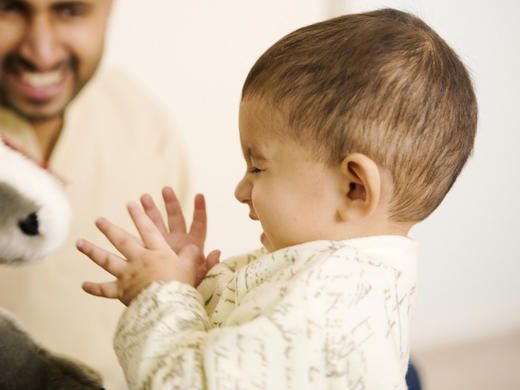
Your babies even cry differently for different reasons. Once you get the hang of it, you’ll understand every cry and the tiny little difference in each cry. Talk to them in a cartoon voice to let them know you understand their cries and calls.
They’ll know you’re listening learn the importance of communication and make various efforts to cry differently each time, and this will, over time, take the form of words and sentences.
Sensory Skills
Five of them, the activities for 3-month-old babies listed in this section, are focused on improving the sensory skills of your little munchkin so that they understand and learn to differentiate between each stimulus and the sensory organ responsible for it.
13. In My Skin
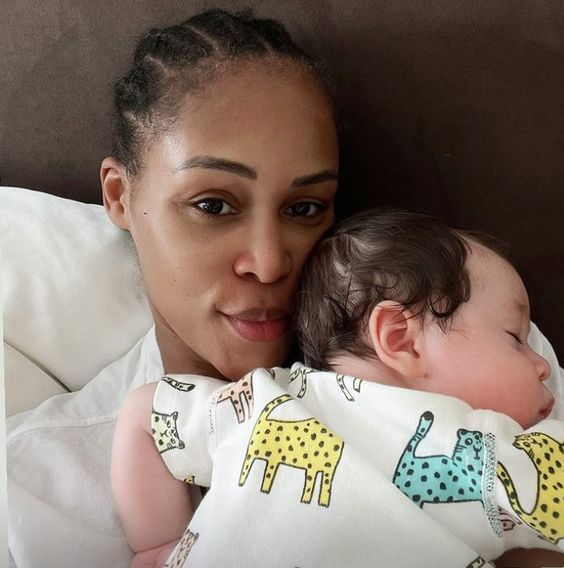
Skin-to-skin contact is a must for babies, and even doctors recommend laying your babies on your bare chest post-birth for warmth. The extensive skin-to-skin contact will allow your baby to feel warmth and comfort and, at the same time, help in developing the necessary sensory skills, which are proven to be very crucial in the nascent stages of growth.
14. Jingle All the Way
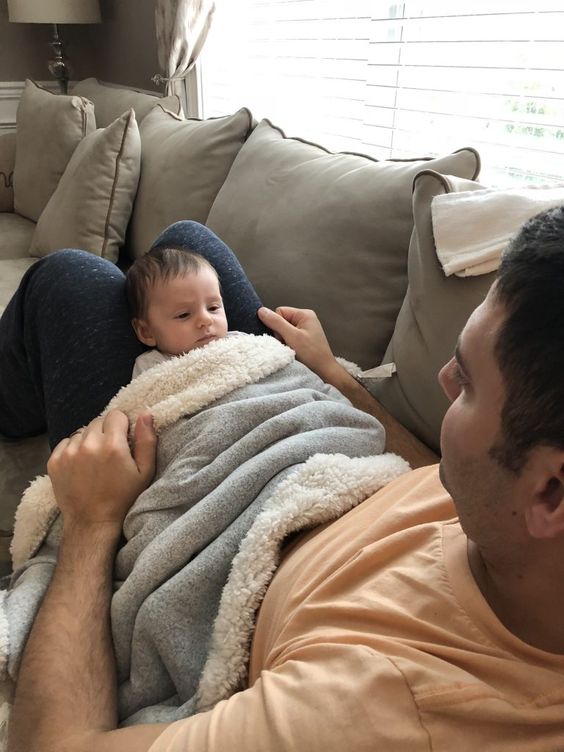
Your little one is going to love and remember all the little jingles and songs that you sing to them all through the day and at night. They’re going to listen to your voice actively, sing to them, talk to them, and respond by smiling, laughing, and being happy in your presence. Moreover, this will also help develop their listening and response to auditory stimuli.
The more you sing and talk to them, the more they’ll grow and learn to recognize your voice sounds around them and will be able to differentiate between a human voice effectively and sounds around them.
A must activity for 3 to 4-month-old babies.
15. Splish-Splash!
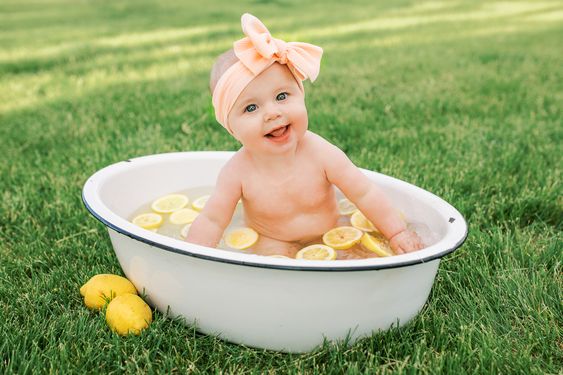
At the growing stage, your baby will start to enjoy getting a bath. They will start to love and get comfortable with the feeling of getting wet and feeling clean afterward. Make sure you warm the water a bit for the bath and constantly talk to the baby during the bath to explain to them the steps that you are taking during the baths.
The baby will develop recognition and start relating your voice with the sound and feel of water; they will love taking a bath much more when they’ll see your happy and cheerful face while enjoying the water. Allow them to play a little bit and get comfortable with water.
We suggest you use water that is safe for drinking as these curious little cuties tend to lick and drink some of it at first. This will, in turn, get them comfortable with feeling the water of different temperatures and help program out the fear of water from their minds.
This is indeed a slow process; your baby will gradually move from getting cranky at the thought of bathing to loving it, so a ton of patience is a must in this case. We know you’ll be great; you’re the mommy and daddy now!
Conclusion
To sum up, these activities for 3-month-old babies will have a significant impact on the development and well-being of your baby. Of course, it is crucial to understand that every little one has their own pace to learn, understand, and grow. Parents should take special care to understand their child’s pace and not overwhelm these tiny titans.
Fine motor skills, gross motor skills, communication skills, learning skills, and sensory skills are all very crucial, and these activities for 3-month-olds mentioned are all researched and proven to be helpful in the speedy development of your baby.
Also, these engagement activities for three to 4-month-old children prove to be some of the best bonding moments between parents and babies, so make sure you have your cameras ready.
Happy parenting!









